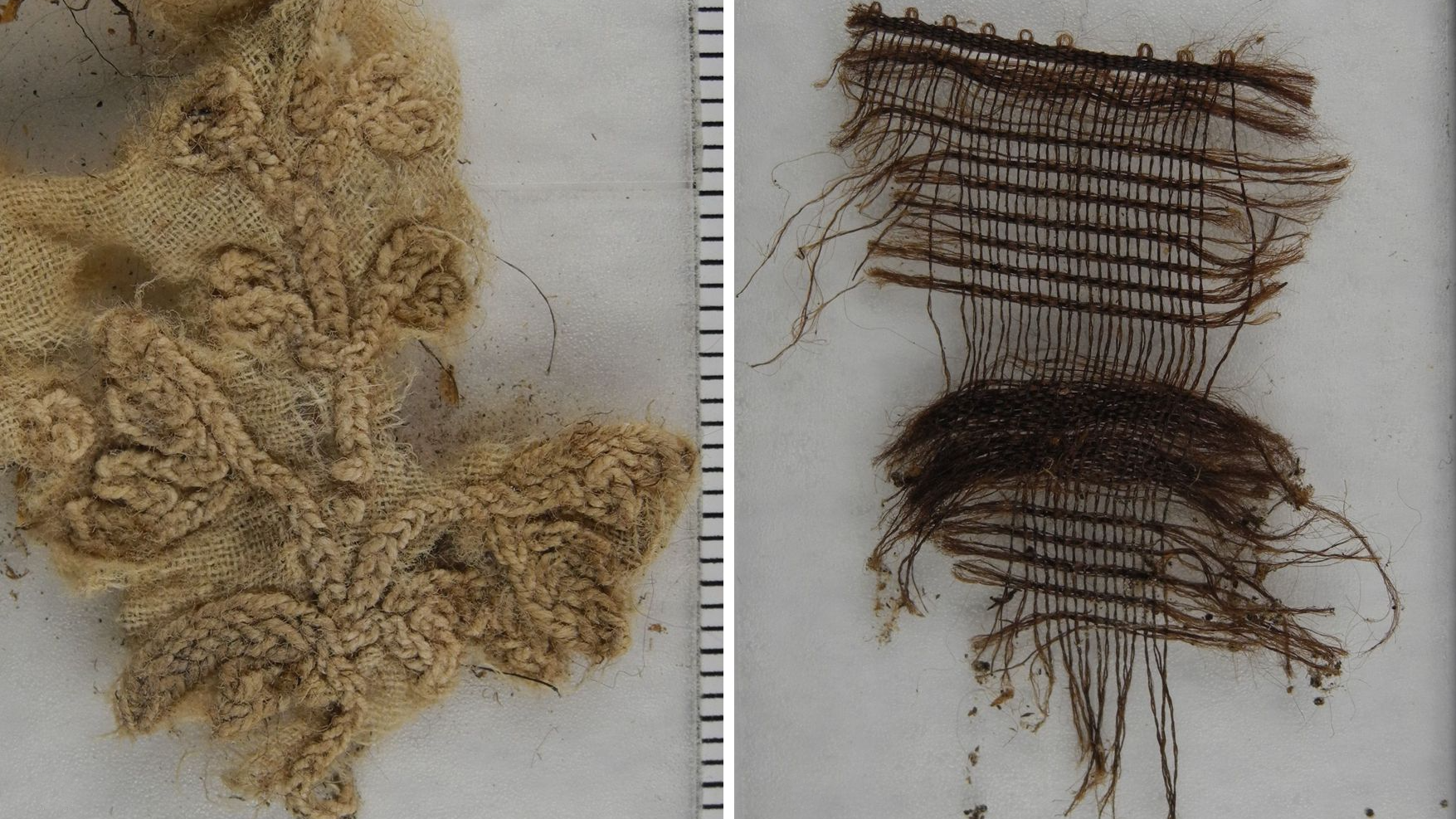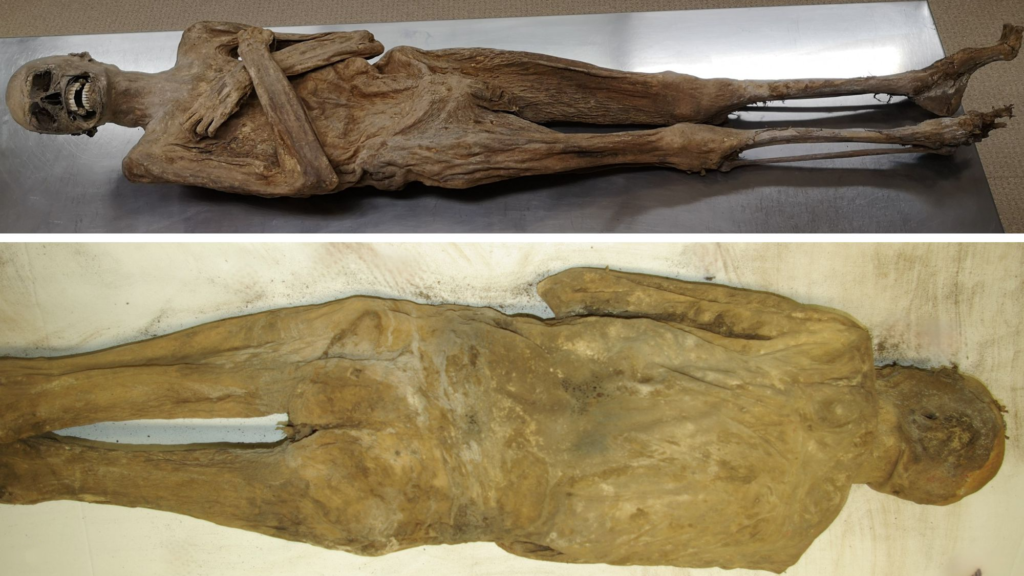While analyzing an 18th-century Austrian mummy, researchers discovered that the man died from tuberculosis and was preserved in a very unusual way: with wood chips, twigs and fabric packed into his abdomen through his anus.
The mummified body was located in a church crypt in St. Thomas am Blasenstein, a small village in Austria near the Danube River. Known locally as the “air-dried chaplain,” the mummy was assumed to have been the preserved remains of a parish vicar named Franz Xaver Sidler von Rosenegg, who died in 1746.
Over the years, Sidler’s body has been associated with various healing miracles. But his cause of death remained a mystery, heightened by an X-ray analysis in 2000 that suggested his mummy contained a poison capsule.
In a study published Friday (May 2) in the journal Frontiers in Medicine, researchers conducted a new analysis, using multiple techniques to quash rumors about Sidler’s puzzling death. In the process, they discovered a remarkable embalming method missing from historical records.
“Our investigation uncovered that the excellent preservation status came from an unusual type of embalming, achieved by stuffing the abdomen through the rectal canal with wood chips, twigs and fabric, and the addition of zinc chloride for internal drying,” study lead author Andreas Nerlich, a researcher at Ludwig-Maximilians University in Munich who specializes in mummy research, said in a statement.
Related: ‘Pregnant’ ancient Egyptian mummy with ‘cancer’ actually wasn’t pregnant and didn’t have cancer, new study finds
Following a macroscopic observation of the body, which revealed male external genitalia, the research team performed a CT scan of the mummy to identify the organs and other material inside the body. They also took samples of skin, tissue and dental enamel for chemical analyses, to establish when the man died, what he ate and whether he had been poisoned.
The CT scan revealed a minor-but-chronic infection in the man’s nasal sinuses, and several of his front teeth were worn in a semicircular pattern, both of which suggested long-term pipe smoking. Additionally, the researchers discovered calcifications and cysts in his lungs, both of which are common in people with chronic tuberculosis. These lung issues may have resulted in acute pulmonary hemorrhage, the researchers noted in the study. This was his likely cause of death, the research team said, since the toxicology analysis did not reveal any evidence of poisoning.
But the afterlife of the mummy and the way it was created have baffled the researchers.

After making a small incision in the chest wall, the team closely examined the foreign material found inside the body of the mummy. This material included mud, wood chips from spruce and fir trees, and branches from unidentified tree species. Intermingled in this mixture were swatches of hemp, flax and silk fabric, along with wooden buttons that presumably adorned the fabric. The round, hollow object that researchers previously believed was a poison capsule was extracted and found to be a glass bead from a rosary.
Historically, mummies have often been created by opening the body’s abdominal wall, removing the organs, and inserting packing material. But in this case, the mummy’s abdomen was intact, leading the researchers to conclude that his pelvis was packed via his anus, which they found to be somewhat enlarged.
Based on the radiocarbon date from the mummy’s skin, the age at death determined from the skeleton, and historical records, the researchers concluded that the mummy could indeed be positively identified as Franz Xaver Sidler, who died in St. Thomas in 1746 at only 37 years old. Because most people at that time were not mummified, however, it is still unclear why Sidler merited this treatment.
“We have some written evidence that cadavers were ‘prepared’ for transport or elongated laying-out of the dead,” Nerlich said. “Possibly, the vicar was planned for transportation to his home abbey, which might have failed for unknown reasons.”
Mummy quiz: Can you unwrap these ancient Egyptian mysteries?
